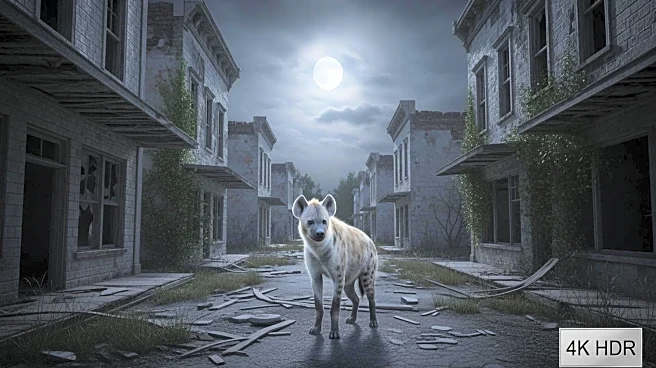What's Happening?
Recent research from the University of York highlights a concerning trend of human-driven extinctions occurring at a scale not seen since the mass extinction event that wiped out the dinosaurs 66 million years ago. The study, which involved a comprehensive
review of environmental changes and fossil records, suggests that if current rates of human-induced extinction continue, they could reach the threshold of a mass extinction. This threshold is defined by the loss of 75% of the world's species in less than 2.8 million years. The research underscores the significant impact humans have had on biodiversity, dating back 130,000 years with the disappearance of species like mammoths and giant sloths. Modern examples include the extinction of the Tasmanian tiger, the dodo, and the Steller's sea cow. The study's lead author, ecologist Jack Hatfield, emphasizes that while the pace of change is unprecedented, it is not too late to alter this trajectory.
Why It's Important?
The findings of this study have profound implications for biodiversity and ecological stability. The potential for a mass extinction event driven by human activity poses a significant threat to ecosystems and the services they provide, which are crucial for human survival. The loss of biodiversity can lead to the collapse of ecosystems, affecting food security, climate regulation, and disease control. This research highlights the urgent need for conservation efforts and policy changes to mitigate human impact on the environment. Stakeholders, including governments, conservation organizations, and the public, must collaborate to implement sustainable practices and protect endangered species. The study serves as a call to action, emphasizing that humanity has the power to change the course of this potential ecological crisis.
What's Next?
The study suggests that immediate action is required to prevent further biodiversity loss. This includes strengthening conservation policies, increasing protected areas, and promoting sustainable land use practices. Governments and international bodies may need to convene to discuss and implement strategies to curb human impact on the environment. Public awareness campaigns could play a crucial role in educating individuals about the importance of biodiversity and the steps they can take to reduce their ecological footprint. The research community may continue to monitor and report on biodiversity trends, providing data to inform policy decisions and conservation strategies.
Beyond the Headlines
The ethical implications of human-driven extinctions are significant, raising questions about humanity's responsibility to other species and the planet. This situation also highlights the interconnectedness of human and ecological health, as the degradation of ecosystems can have direct and indirect effects on human well-being. The study may prompt discussions about the moral obligations of current generations to preserve biodiversity for future generations. Additionally, the research could influence cultural perceptions of humanity's role in the natural world, potentially fostering a greater appreciation for the intrinsic value of biodiversity.













